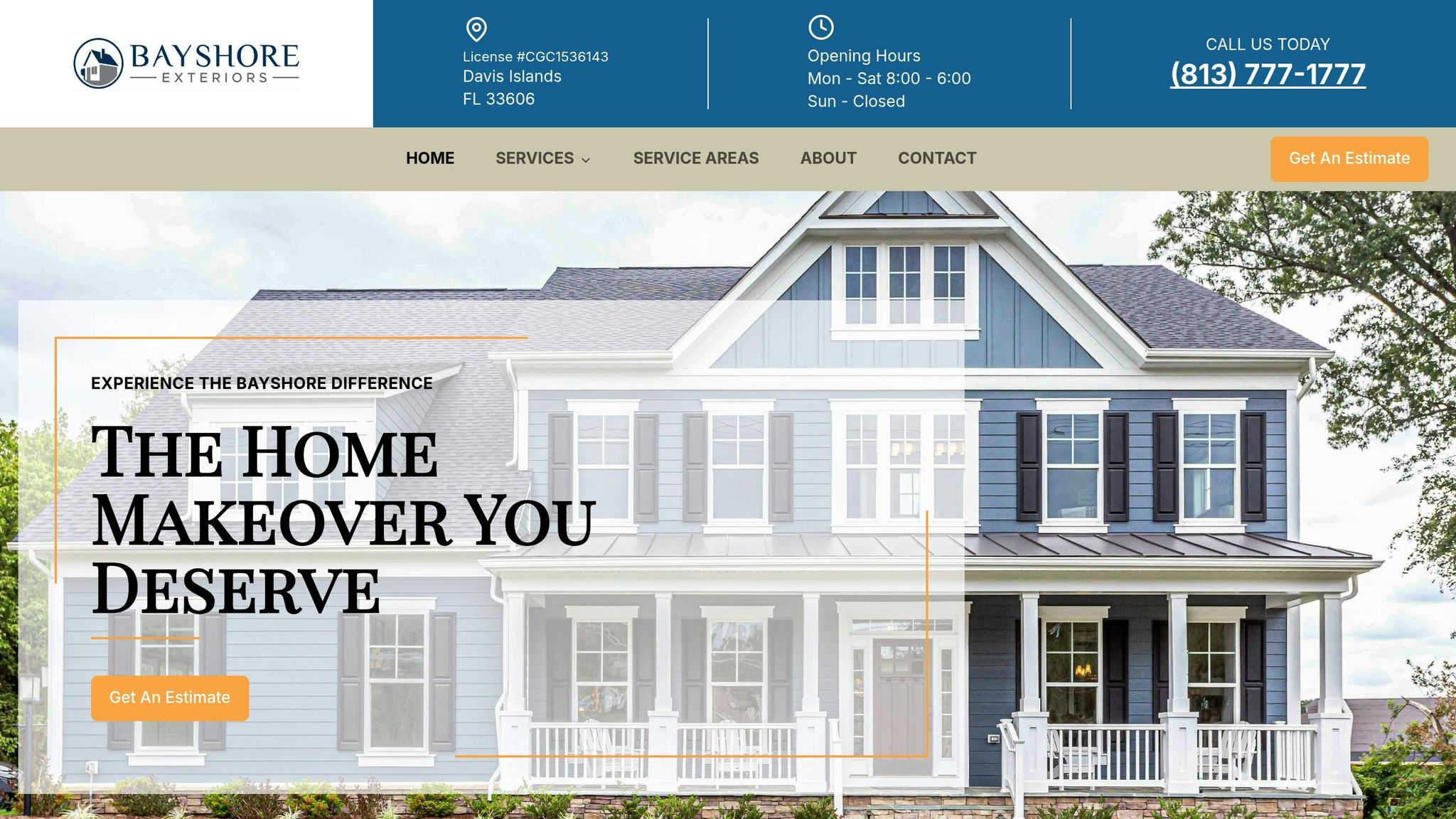


ISO 14001 Standards for Home Renovation Materials

Make an appointment
Get a Free Estimate Today
ISO 14001 Standards for Home Renovation Materials
ISO 14001-certified materials are designed to reduce environmental impact while maintaining durability and performance. Here's what you need to know:
-
What is ISO 14001?
A global standard for environmentally responsible manufacturing, ensuring materials are produced sustainably across their entire lifecycle. -
Why Choose Certified Materials?
- Durability: Long-lasting materials reduce maintenance and replacement costs.
- Eco-Friendly: Features like recycled content, low-VOC, and local sourcing lower waste and emissions.
- Transparency: Comes with detailed documentation on performance, care, and environmental impact.
-
Key Manufacturing Practices:
- Life Cycle Assessment: Evaluates impact from sourcing to disposal.
- Quality Control: Reduces waste and improves efficiency.
- Regulation Compliance: Meets environmental laws and reduces legal risks.
For sustainable renovations, pair ISO 14001-certified materials with contractors experienced in eco-conscious practices to ensure optimal results.
Understanding the life cycle perspective in ISO 14001
ISO 14001 Manufacturing Requirements
ISO 14001 outlines three key requirements for manufacturing exterior renovation materials: life cycle assessment, quality control systems, and regulation compliance. Here's a closer look at each and how they contribute to responsible material sourcing.
Life Cycle Assessment
This involves analyzing the entire journey of exterior renovation materials, from raw material extraction to final disposal. The goal is to identify opportunities to minimize resource use and waste while ensuring the materials remain durable and effective.
Quality Control Systems
Monitor factors like waste production, energy consumption, and process efficiency. Regular audits based on these metrics can help fine-tune processes, reduce waste, and improve overall efficiency.
Regulation Compliance
Ensure adherence to federal, state, and local environmental laws through clear documentation, regular audits, and risk assessments. Keeping detailed records not only helps manufacturers stay compliant but also reduces legal risks and highlights their commitment to environmental responsibility.
sbb-itb-85e0110
Advantages of Certified Materials
Certified materials, guided by ISO 14001 standards, offer clear benefits in terms of cost efficiency, environmental responsibility, and detailed documentation.
Long-Term Cost Benefits
Materials meeting ISO 14001 standards are designed to last. They minimize the need for frequent replacements, lower maintenance demands, reduce defects, and perform well even in harsh weather. This durability can lead to lower repair bills and insurance premiums over time.
Lower Environmental Footprint
Certification prioritizes features like recycled content, low-VOC (volatile organic compound) components, and locally sourced materials. These practices help cut down on energy consumption, reduce the use of raw materials, and decrease transport-related emissions. Plus, their longer lifespan means less waste ends up in landfills, conserving resources in the process.
Comprehensive Material Documentation
Certified materials come with detailed data, including performance specifications, environmental impact summaries, care instructions, and warranties. This information helps homeowners make informed decisions, maintain their materials properly, and highlight their eco-friendly renovation choices.
Using ISO 14001 in Home Projects
Once you've chosen ISO 14001-certified products, it's essential to work with contractors who know how to use these materials in a way that aligns with sustainable practices.
Working with Qualified Contractors
Look for contractors who have experience with ISO 14001 projects. They should demonstrate strong craftsmanship, clear communication, and provide detailed project plans. These plans should outline the use of certified materials, specific sustainability goals, and exact finishing details.
"Passion for Excellence - We're more than just contractors - we're passionate craftsmen dedicated to delivering superior results with every project we undertake. From the initial consultation to the final inspection, our team is committed to exceeding your expectations at every turn." - Bayshore Exteriors
Evaluating Material Lifecycles
Take time to review the lifecycle assessment (LCA) and environmental product declaration (EPD) of each material. This helps you understand the overall environmental impact of the materials, from start to finish. Key phases to consider include:
- Sourcing: Where and how the material is obtained.
- Manufacturing: The processes involved in creating the material.
- Use: How the material performs during its intended purpose.
- Disposal: What happens to the material at the end of its life.
Conclusion
Key Takeaways
ISO 14001-certified materials ensure responsible practices at every stage - sourcing, manufacturing, installation, and disposal. They provide long-lasting, visually appealing renovations while aligning with international eco-standards.
Bayshore Exteriors Services

Bayshore Exteriors integrates ISO 14001 standards into its services, offering expert consulting, careful planning, and precise installation. Specializing in James Hardie siding, they deliver eco-conscious, durable exterior renovations with clear pricing and skilled craftsmanship. Choose Bayshore Exteriors and ISO 14001-certified materials for sustainable, long-lasting results.